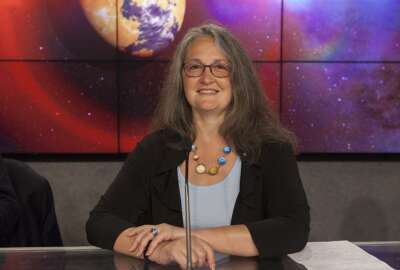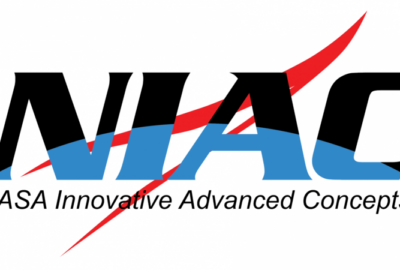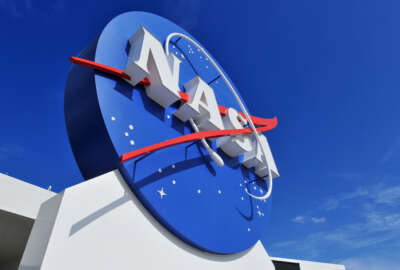Hubbard Radio Washington DC, LLC. All rights reserved. This website is not intended for users located within the European Economic Area.
Experienced hand takes helm at big NASA center, meet Joseph Pelfrey
NASA's Marshall Space Flight Center has a new director. Joseph Pelfrey has worked at Marshall in a variety of capacities for nearly 20 years.
NASA’s Marshall Space Flight Center has a new director. He’s worked at Marshall in a variety of capacities for nearly 20 years, including as deputy director. The Federal Drive with Tom Temin talked with the new head honcho, who also has experience in both engineering and operations: Joseph Pelfrey.
Interview Transcript:
Tom Temin You must feel like you’ve got one of the best jobs in government, because I think a NASA space Flight center director is one of the best jobs in government.
Joseph Pelfrey I agree. I cannot think of a better place to be to work with this team and work in this community to do some amazing feats for humanity.
Tom Temin And each of the centers across the nation that NASA operates kind of has a flavor. You know, the famous ones where rockets take off and go to the moon and so forth. How would you describe the flavor, if you will, of Marshall?
Joseph Pelfrey For over six decades, Marshall Space Flight Center has been leading some of humanity’s greatest achievements in space. From the initial Apollo missions, some amazing scientific discoveries, to the advancements that we’re doing today in the Artemis campaign. Marshall’s legacy is built on a strong technical expertise propulsion systems, launch vehicle systems, integrating large space systems. But we also have a very robust science and technology portfolio supporting all of the various missions that NASA is engaged with. And we have a bright history of building things. And a lot of first, as we have done through our history, building the rockets has sent humans around the Earth for the first time, building the rockets that sent humans to lunar orbit for the first time. And then in November of 22, we launched the first space launch system to kick off the Artemis campaign. And so, we are proud of our long legacy of supporting the nation’s advancements and goals in space exploration.
Tom Temin And for NASA. Often, the missions and the operations are just one step ahead of the science. I remember the speech that John F Kennedy made at Rice University, and he referenced the fact that the moonshot would eventually be made of materials and alloys that haven’t even been invented yet. And in some ways, the science is just out of the oven and off it goes. A fair way to put it.
Joseph Pelfrey Absolutely. Part of our goal is to really advance not only the things we need for space exploration, but how it can benefit those here on Earth. And there’s many, many examples of how that has progressed. One of the key areas that we focus on at Marshall is the advanced manufacturing in materials science and research. What are those materials that we need to build the space structure, build the instruments to allow us to explore further. And that’s an area of expertise for Marshall Space Flight Center. And with the advent of 3D printing has brought a whole new discipline of manufacturing. And that’s one of our strengths. And we partner with a number of industries and other NASA centers to really push the boundaries of our knowledge in that area.
Tom Temin And as director, you know, you oversee a really big, complex physically, a lot of acreage. I’ve driven past it actually a couple of times in my career. And you also have a lot of people. There’s 7000, I think, employees there, contractors and government employees. What’s the first thing you check on when you get to your desk in the morning?
Joseph Pelfrey That’s a great question. I usually, look at the reports that come in from our security teams to make sure we didn’t have any issues overnight. Our facilities teams that make sure all of our buildings and infrastructure are working correctly. We often have reports from the missions and what went on overnight for any of our active images or are upcoming launches. Just last night we had our launch writing this review for the Commercial Crew. Crew eight launch. We’re getting ready for that upcoming flight to the International Space Station. And so, we had a late review last night and had some updates this morning. So, it’s usually a summary of just trying to look at the whole portfolio, look at our active missions and seeing what happened overnight. We have a great team. And you mentioned the large team. We have civil service and contractors here and in Huntsville, and I couldn’t be more proud of the team in the community that we have here and the leadership team that I get to work with every day here at Marshall to go lead these missions for the agency.
Tom Temin And you mentioned Huntsville. We should mention that it’s the largest city now in Alabama, I believe, but it’s not a big city. So as the Space Flight Center director, that’s kind of elevates you to a public persona in some ways in the Huntsville area.
Joseph Pelfrey It’s been interesting as I become director, to get to interface in the community. Our community has so much passion for what we do at NASA and at Marshall. It’s everywhere here. The people here are just ingrained in what we do in our missions and our friends, our neighbors, our colleagues are coming out to work every day to, help advance the nation’s goals in space exploration and the force, the partnerships that we need to go further out in deep space. There are 87. He’s here on Redstone Arsenal, where we share some of that acreage, and it is a great federal city of excellence. And we partner well with these other agencies and we’re able to share infrastructure needs. And it’s just a great community. It comes together to really support many aspects of what our nation is doing.
Tom Temin And some great barbecue. We’re speaking with Joseph Pelfrey. He’s director of NASA’s Marshall Space Flight Center and tell us a little bit about yourself. You came up through the ranks and you have had science, engineering, technology work that you did hands on. What’s your personal specialty?
Joseph Pelfrey So that’s a great question. I had a lot of great jobs through my career and a lot of great teams to work with a major in aerospace engineering and ended up moving into systems engineering pretty early in my career. I was always more of a big picture thinker, and so I like looking at the total systems, looking at how the individual pieces are going to interact together and ensuring they come together. And if you think about the International Space Station program was a systems engineering marvel, and that’s where I cut my teeth on that program, designing and integrating science experiments and science facilities that are still operating on the space station today. That was a tremendous experience to see that entire life cycle of a piece of space hardware from a napkin design through requirements to design to manufacturing to testing, and then to see it be operated by an astronaut in low-Earth orbit. It’s just a tremendous experience. And, it really has set me up. Well, for the other jobs that I’ve had, here on center. And, I could not have asked for a better way to start my career.
Tom Temin Yeah, that’s an important point. I think one of the themes of NASA is how do you project complexity so that it operates really far away? You know, they used to say about old planes, it’s 5000 bolts flying in close formation. You’ve got millions of parts flying in close formation really far away where you can’t just go up and kind of wrench them if you need to. And that informs a lot of the thinking about reliability and precision, doesn’t it?
Joseph Pelfrey It absolutely does. And our teams have to work well together. When you look at the International Space Station as an example or the Space Launch System that we’re developing today for the Artemis generation, both of those very complex vehicles have support from companies and individuals and organizations really across the world. And to bring those individuals together, those different sets of expertise to build these amazing machines, it takes a lot of communication, it takes a lot of dedication and a lot of hard work that people put in to ensure that what we’re building is going to operate as the mission needs are, but also operate safely to take care of our astronauts, to take care of people here on the ground and ensure that we can accomplish the mission fully. It is amazing engineering feats. You know, our team, just the dedication they have. It’s inspiring every day.
Tom Temin And you have inherited a set of missions and responsibilities, you know, at Marshall related to Artemis and some of those other programs. What effect can a director have then on the Space Flight Center when everything is kind of preordained in place, when you change hands?
Joseph Pelfrey Clearly, I’ve been involved as the deputy director before, in shaping and helping ensure that these, programs and projects stay on schedule and have the capabilities, the infrastructure they need to be successful. I see my job is somewhat of a blocking tackle and making sure that our program managers have the resources they need, that we develop the capabilities, the engineering disciplines, the professional disciplines that they need to go run these programs and projects. And then we are delivering hardware, within Marshall for these different missions. And so we have the responsibility to ensure that that hardware is meeting requirements, meeting the mission specifications, and then ultimately is ready to fly when we’re ready to do our certificate of flight readiness and ensure that, you know, it’s safe and the hardware is telling us it’s safe to fly. And so, I’m part of that entire process working with our leadership team, within our governance structure. It’s a great honor. It’s a big responsibility to do that. And I really appreciate the team that we have to go pull those things together.
Tom Temin And you get a chance to still wander into the lab or to the manufacturing facility once in a while, just to get your hands on or hands near. I should say they probably don’t want you to have your hands on anymore.
Joseph Pelfrey Yeah. I don’t get to do as much fun stuff anymore. But one of the things that we started when I came up here is we started what we call field trips. And so, once a month, we pick a different area of the lab and the directors, we go down and we just go visit the team and go see what’s going on and get a brief and get to see hardware and see testing, see what’s going on in the facilities. I wish I could do more than that, but we take a focused field trip. Yeah, we spend some time with our teams just really seeing the progress that they’re making on the hardware and seeing some of the amazing expertise that we have on the center. I’ll tell a funny story of myself. I went down, I was going to just surprise one of the teams and go visit and drop in and say hi and, well, my badge wouldn’t let me in the building. So, one of my first acts as the center director was to request that I get access to all of our buildings, so I can do that now.
Tom Temin That’s good. Two questions to wrap up. As a child, were you one of those Erector Set and Tinker toy kinds of kids?
Joseph Pelfrey Absolutely. I was always enthralled with how things worked in engineering and flight, and I grew up in the shuttle generation. I recorded every shuttle launch, would get home from school and study it, and watch it over and over again. So, I wore the tape out and, just from a very early age, I knew I wanted to be a part of what NASA was doing. And it’s just really a dream job to be in this place now.
Tom Temin Yeah. Wearing the tape out does date you a little bit. And finally, do you notice the outbreak of more bow ties as you go around the campus?
Joseph Pelfrey I’m trying to start a trend here as we move. If I look down the pictures of all the passenger directors, there hasn’t been a bow tie, any of those formal pictures. So, I’m going to change that trend.
Tom Temin All right. We’re going to post it at Federal News Network. Joseph Pelfrey is director of NASA’s Marshall Space Flight Center. Thanks so much for joining me.
Joseph Pelfrey Thanks for having us. And thanks for helping tell our story.
Copyright © 2024 Federal News Network. All rights reserved. This website is not intended for users located within the European Economic Area.
Tom Temin
Tom Temin is host of the Federal Drive and has been providing insight on federal technology and management issues for more than 30 years.
Follow @tteminWFED
Related Stories
Related Stories
-
A NASA challenge grant program brings up 13 promising ideas The Space Hour
-
NASA names new small business programs director Federal Newscast





